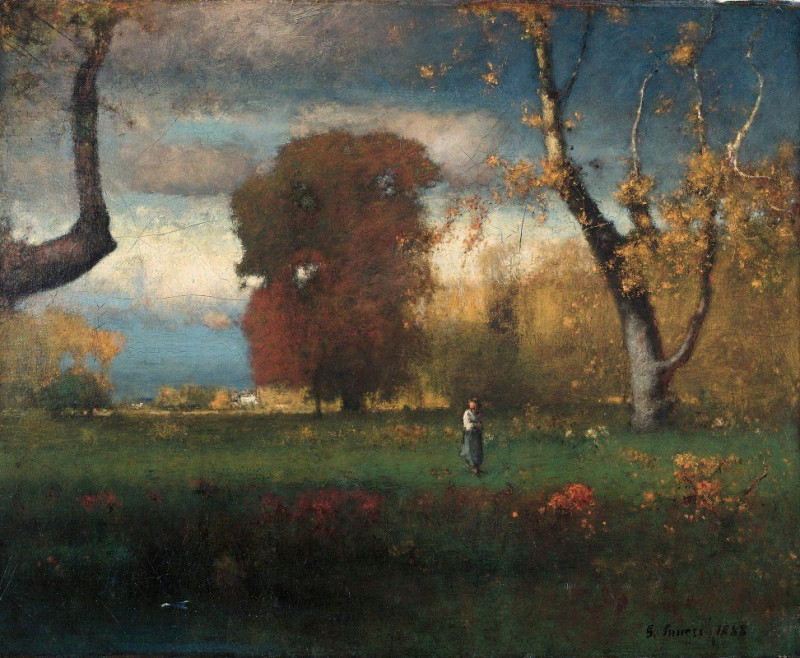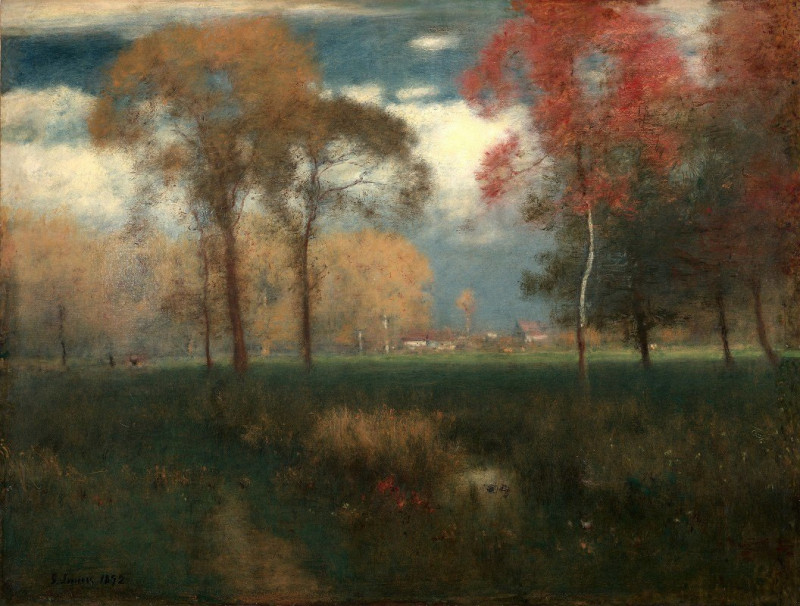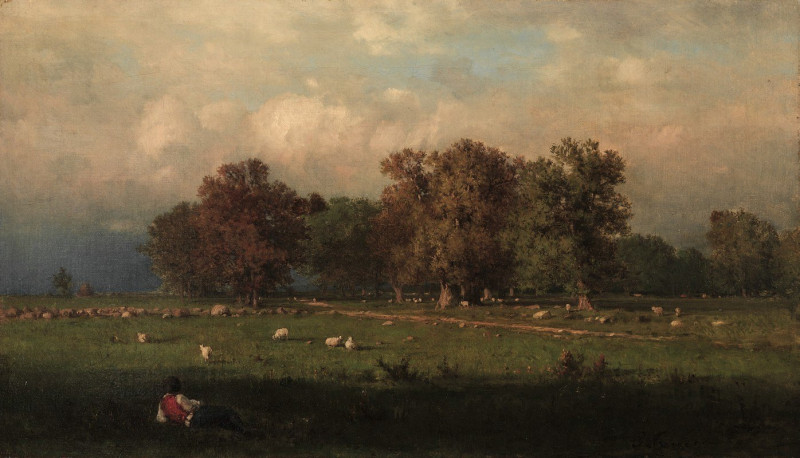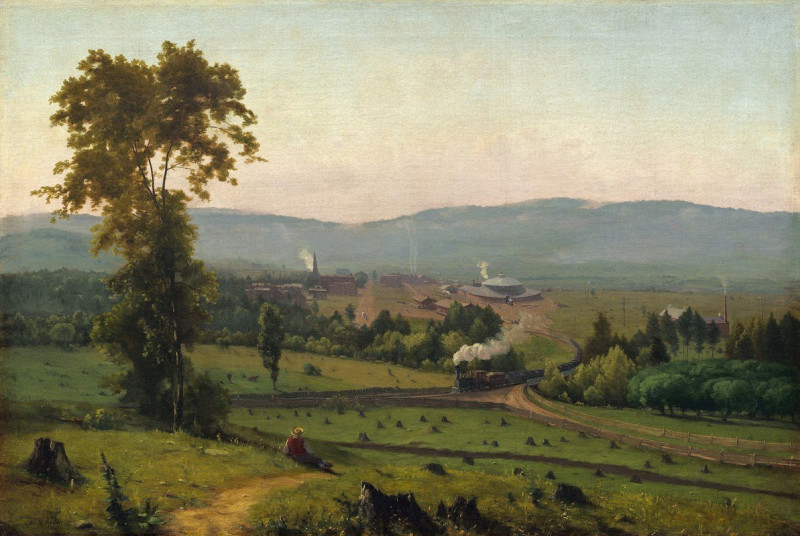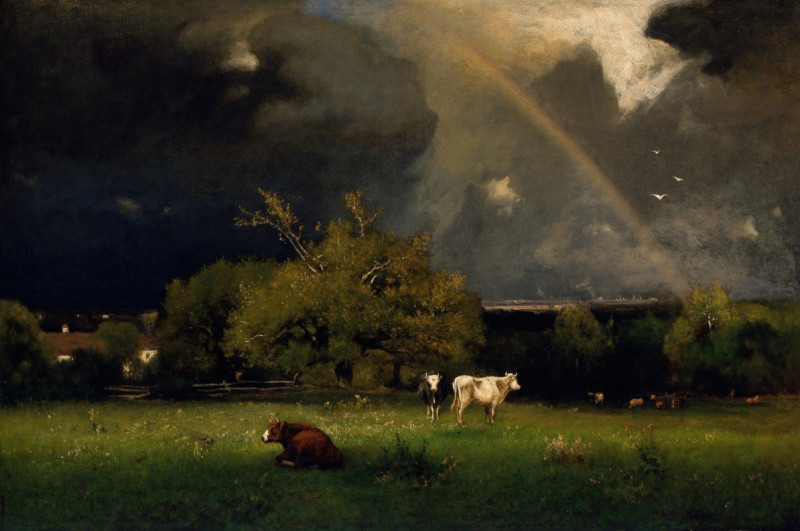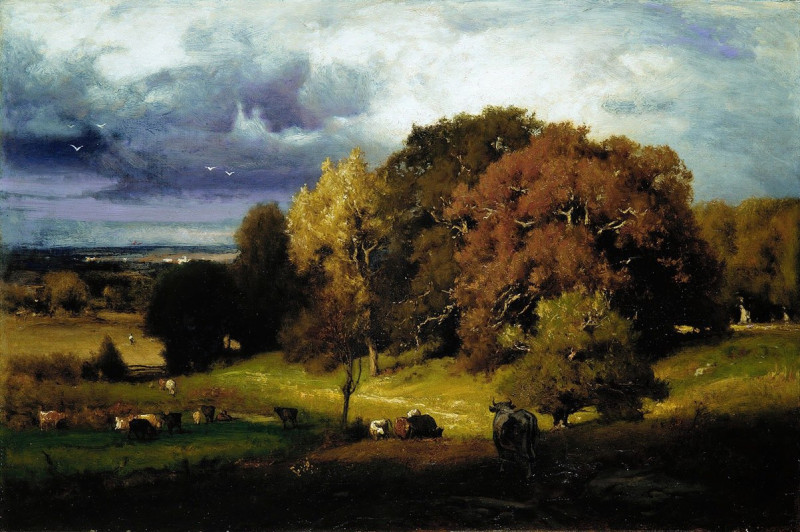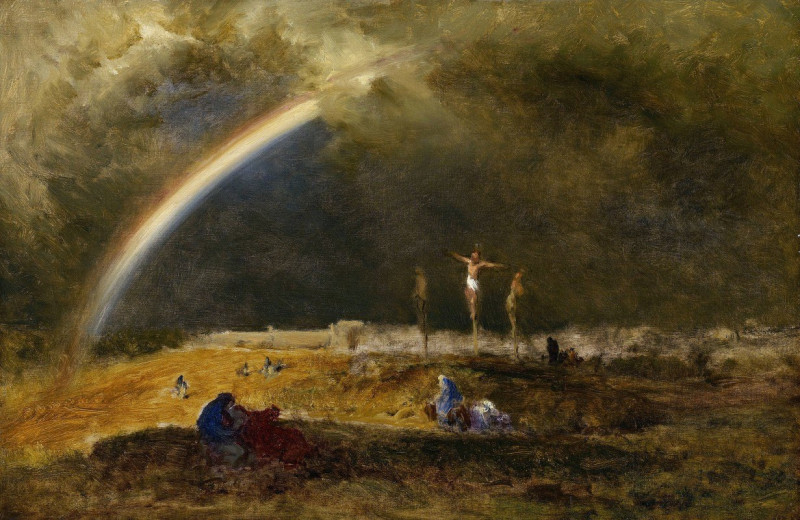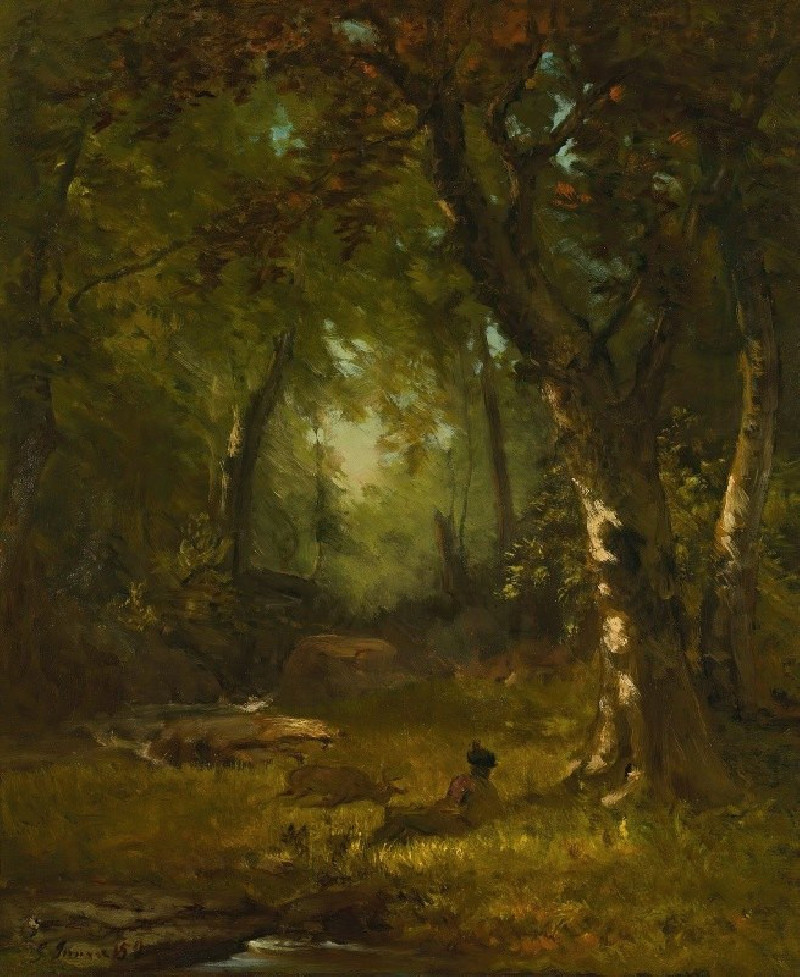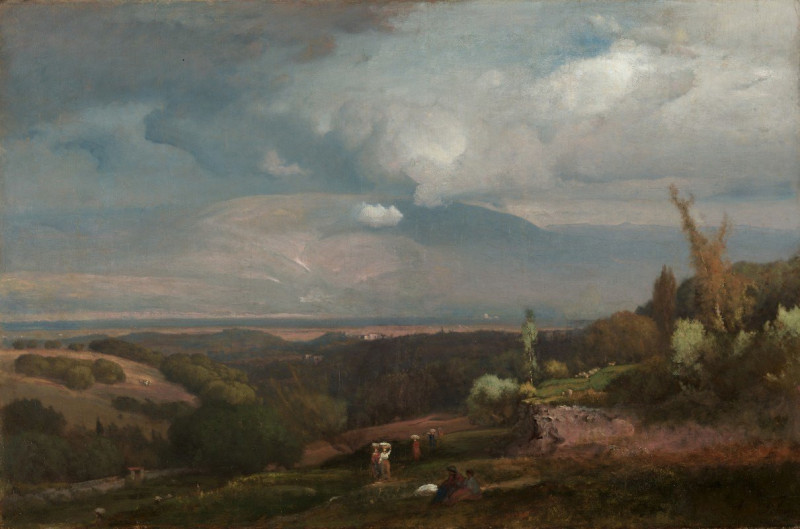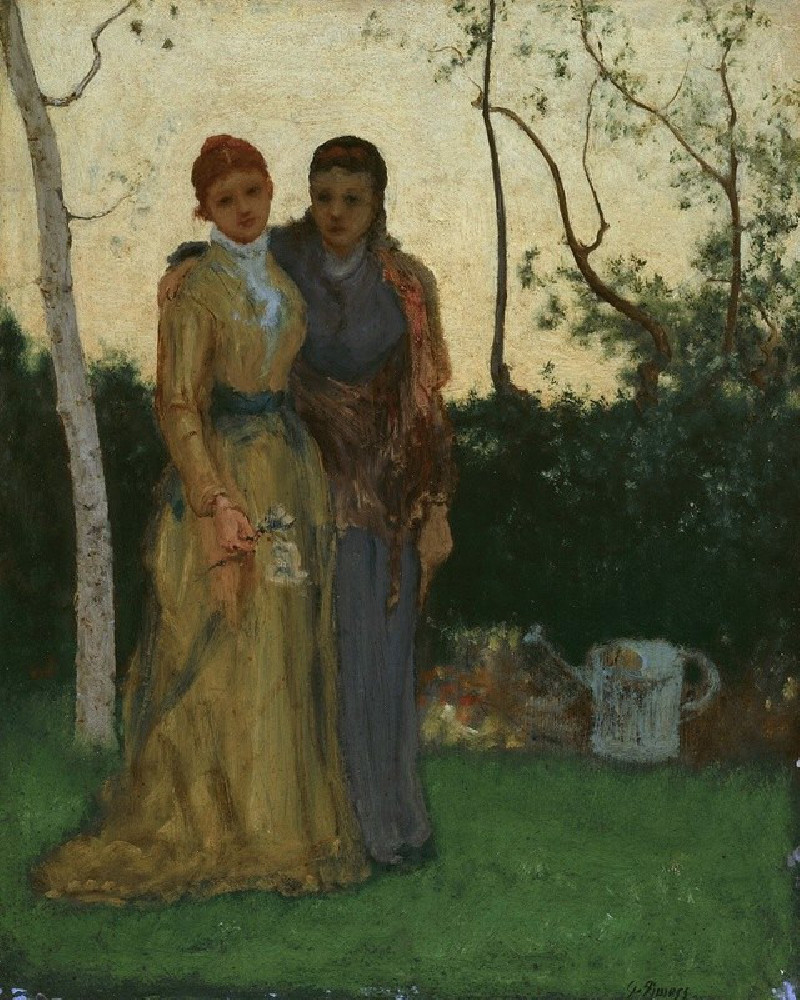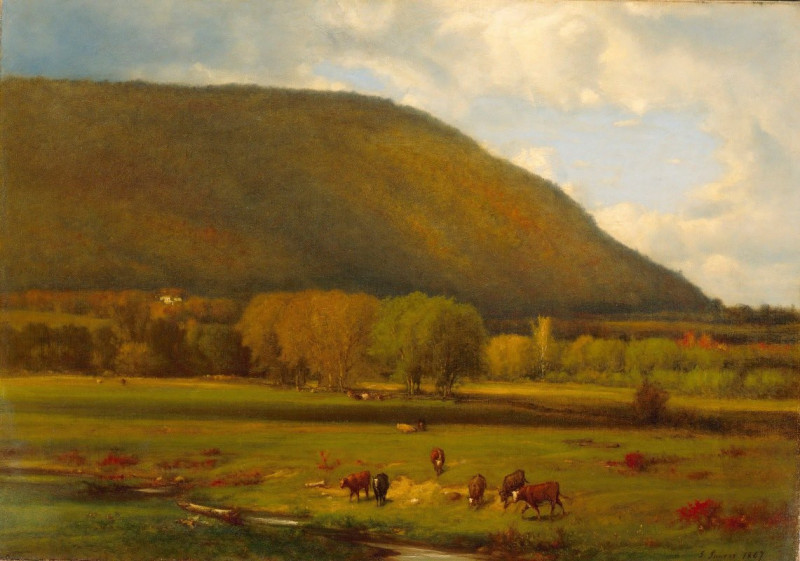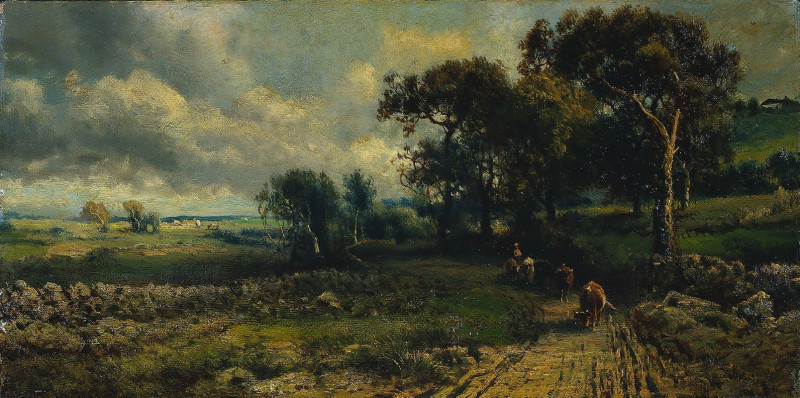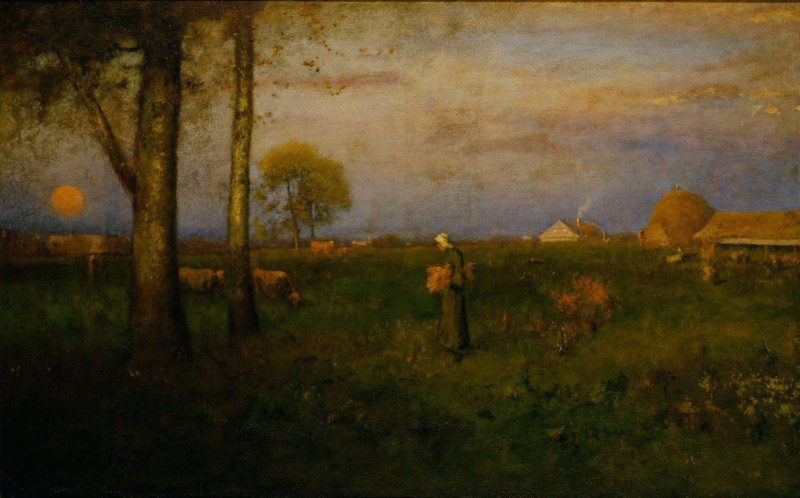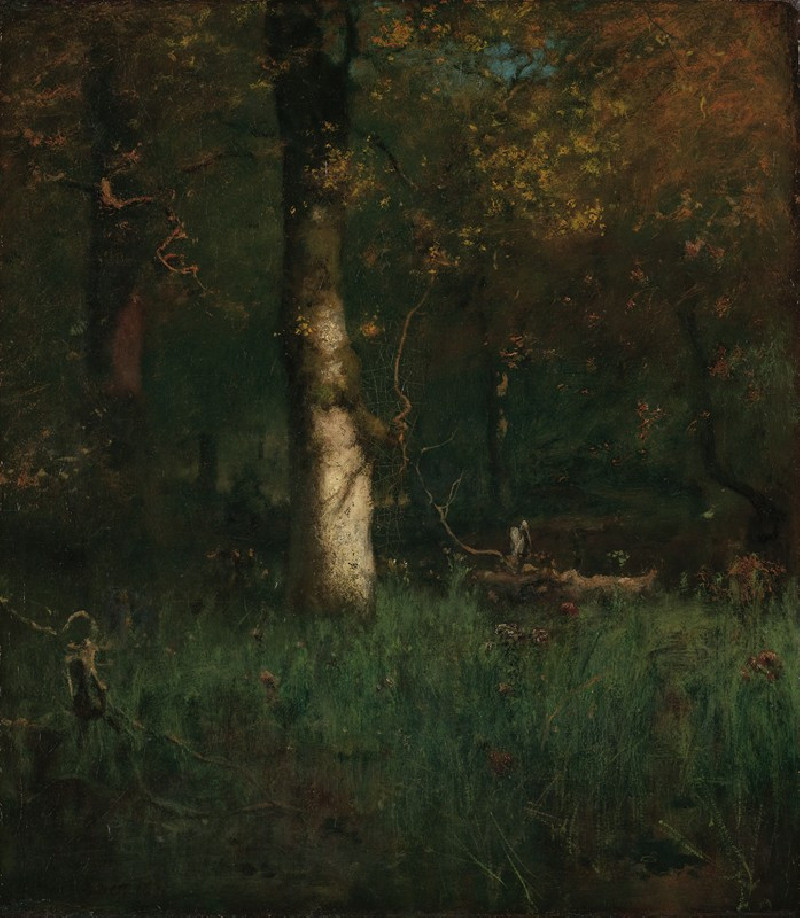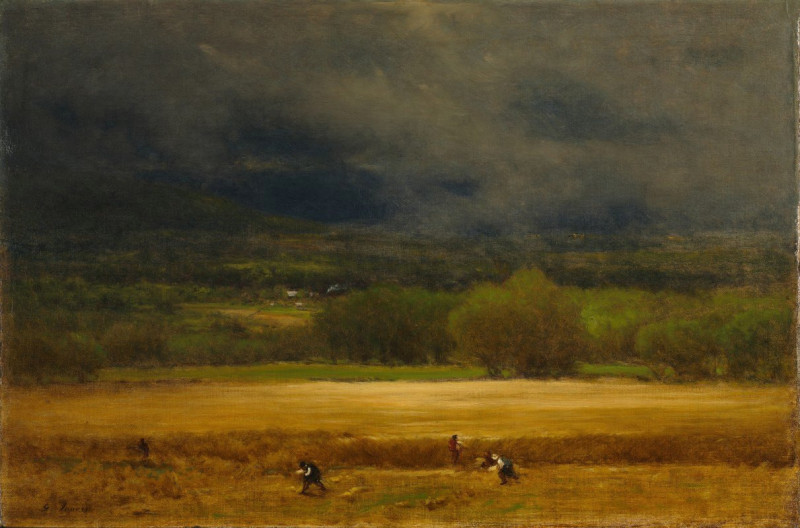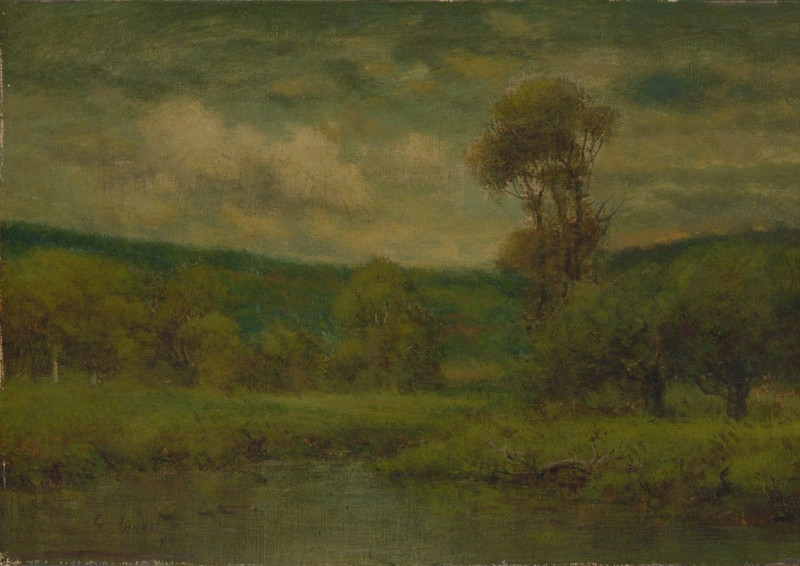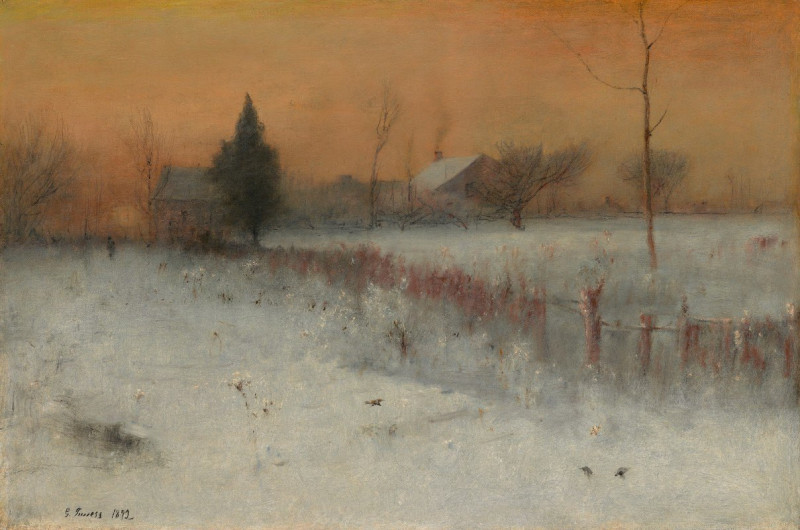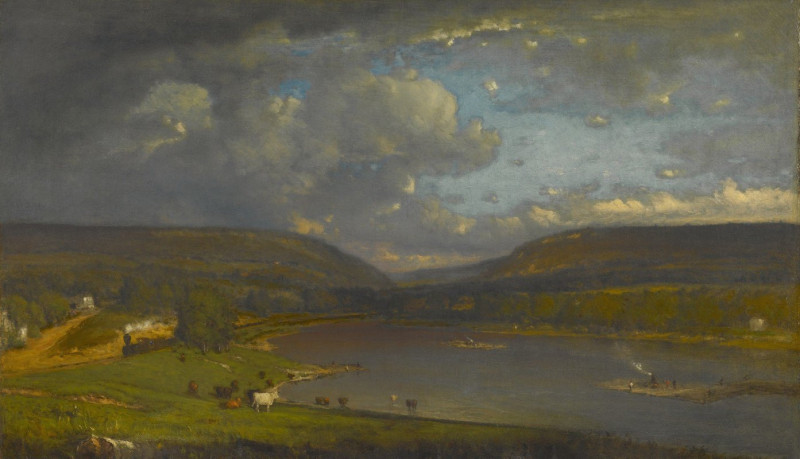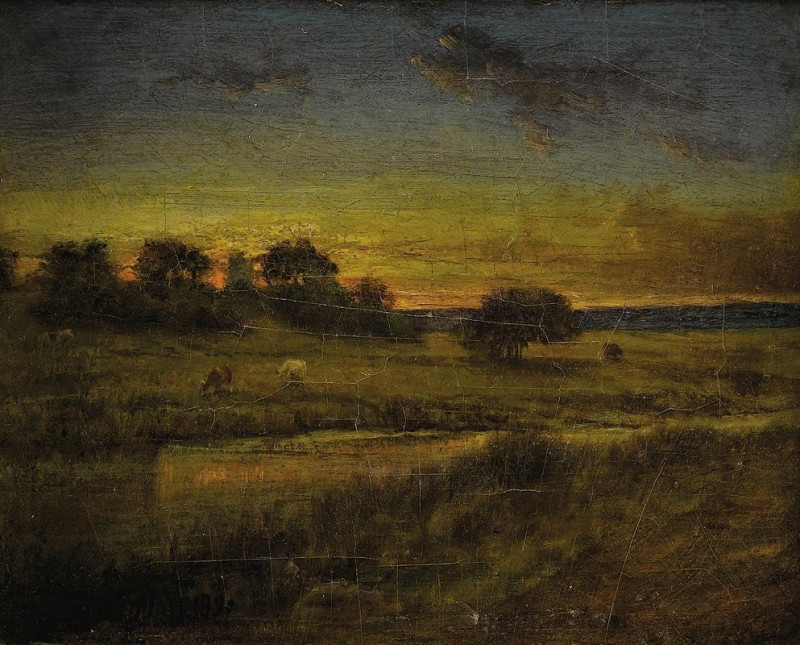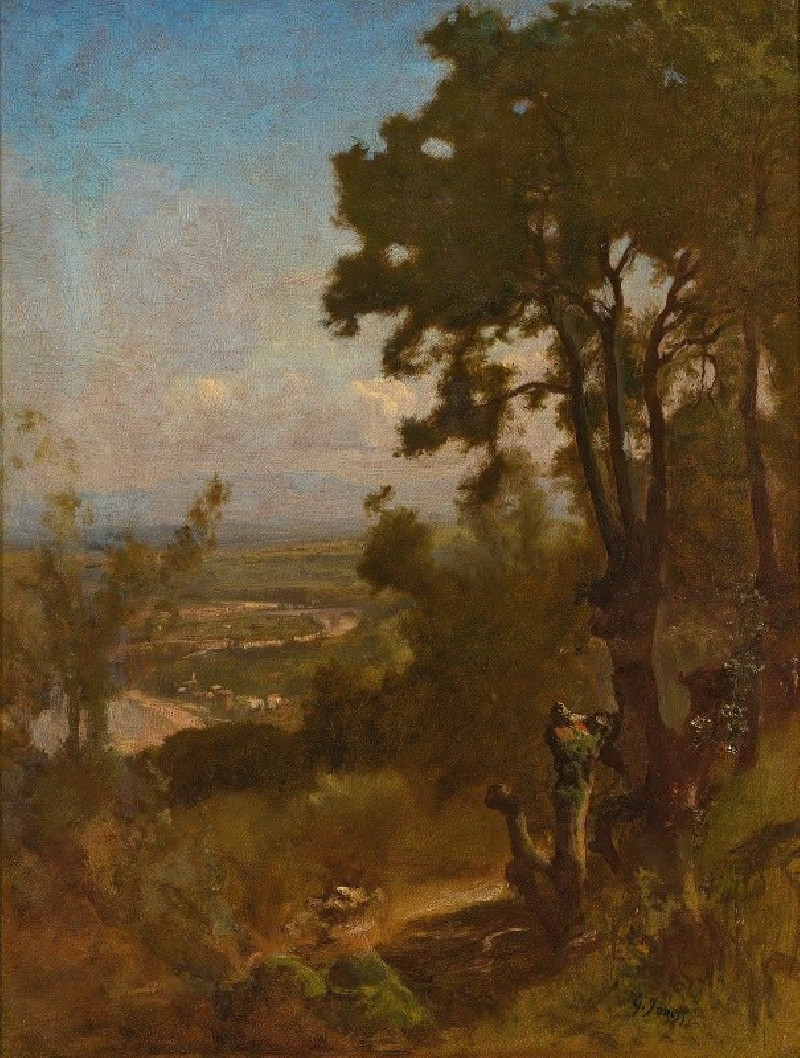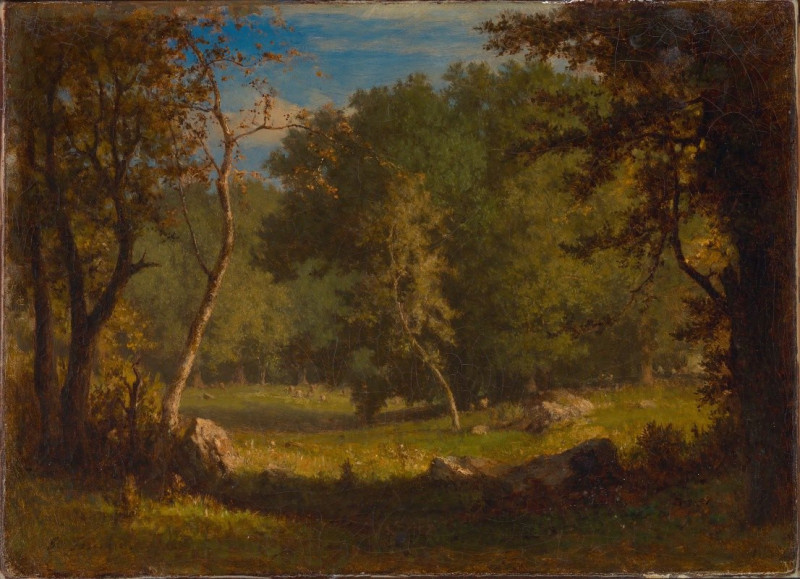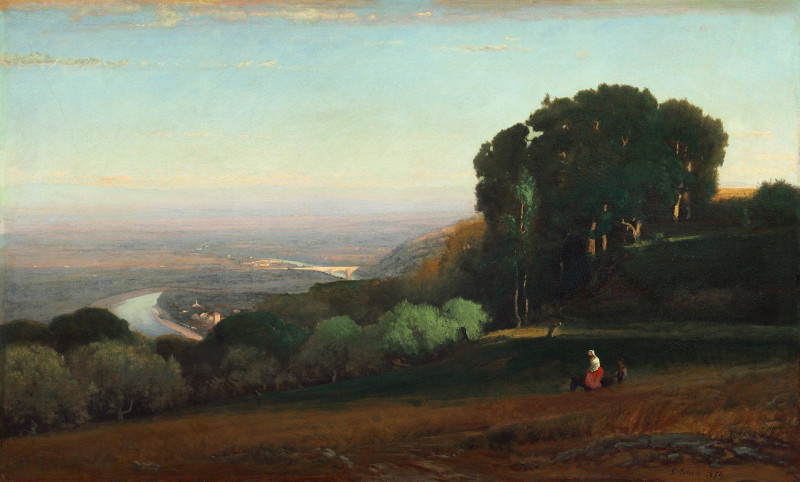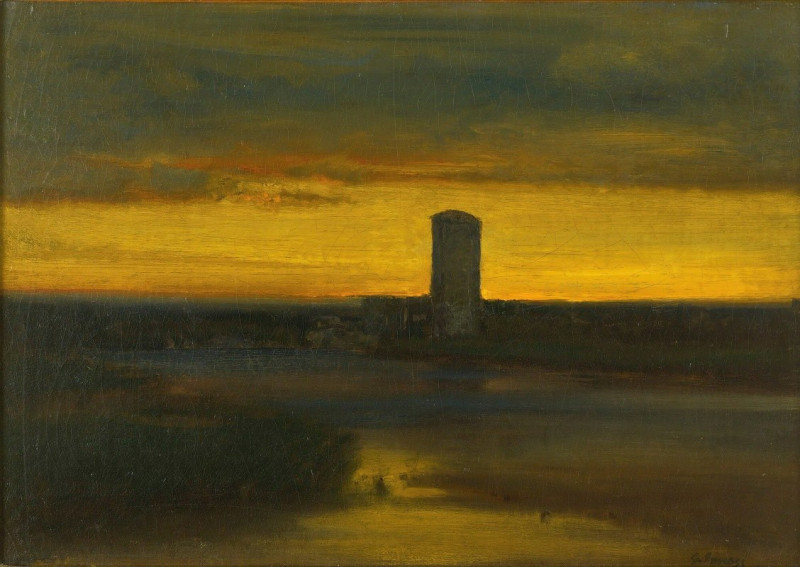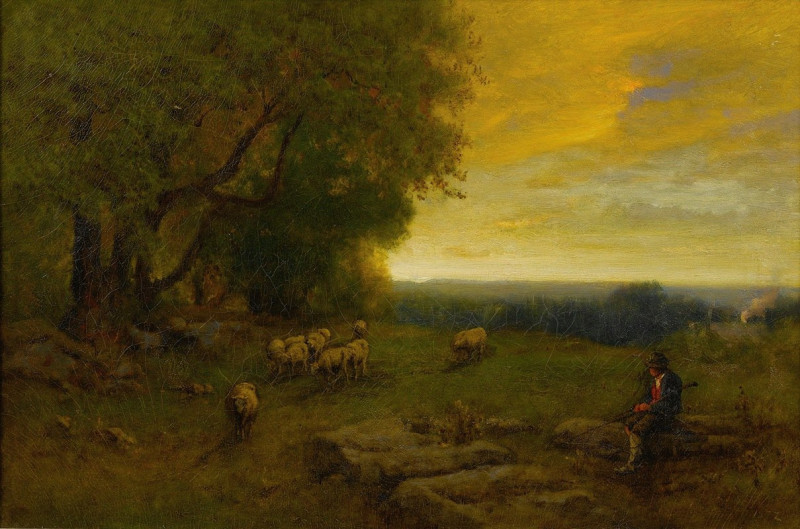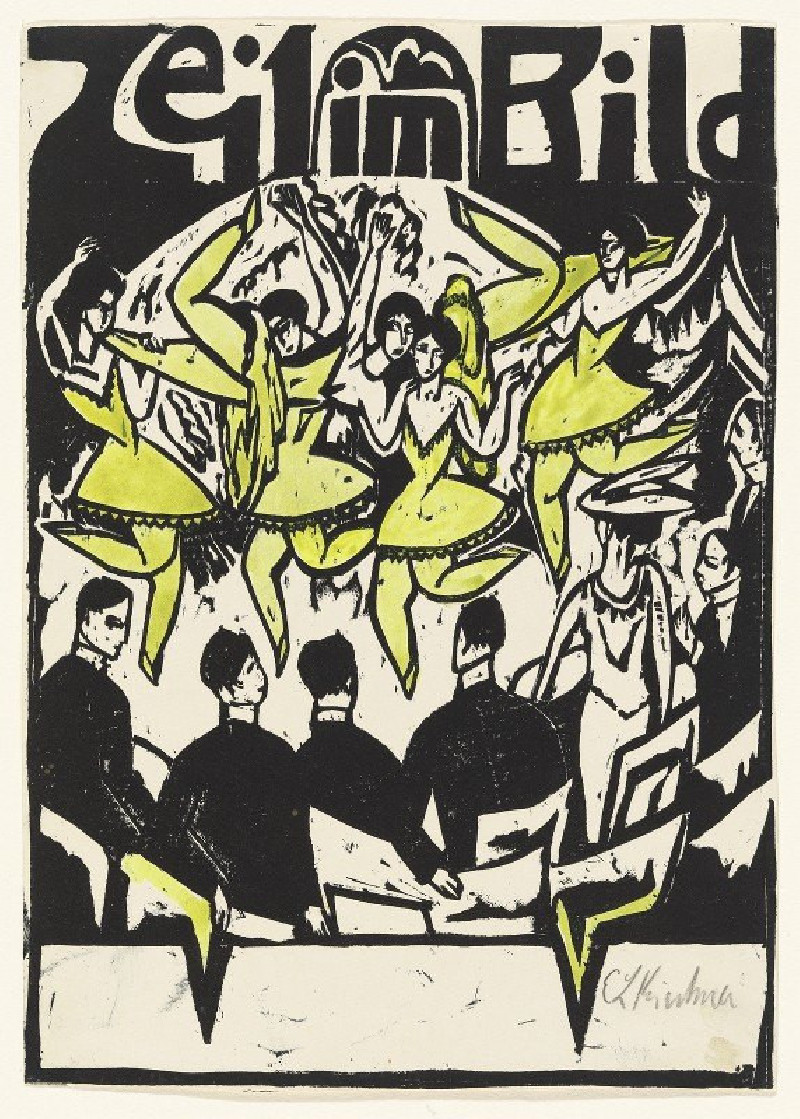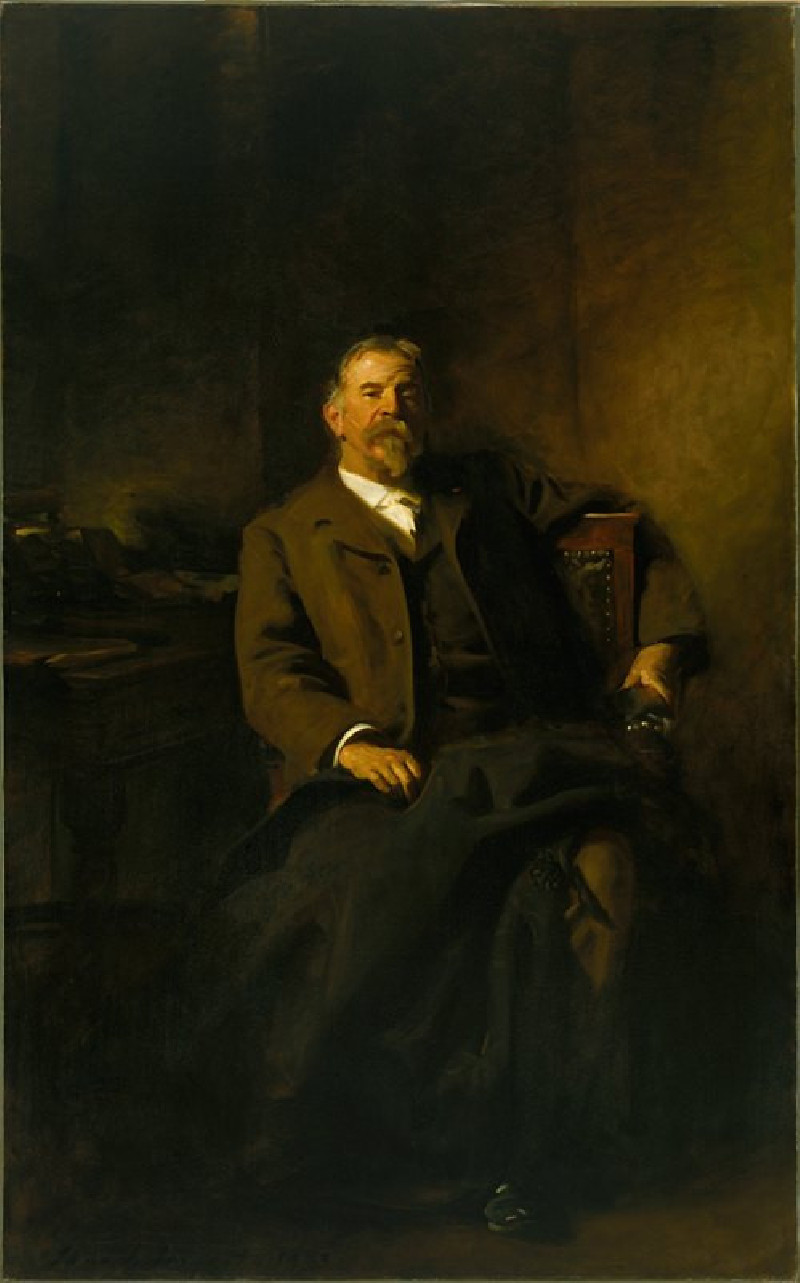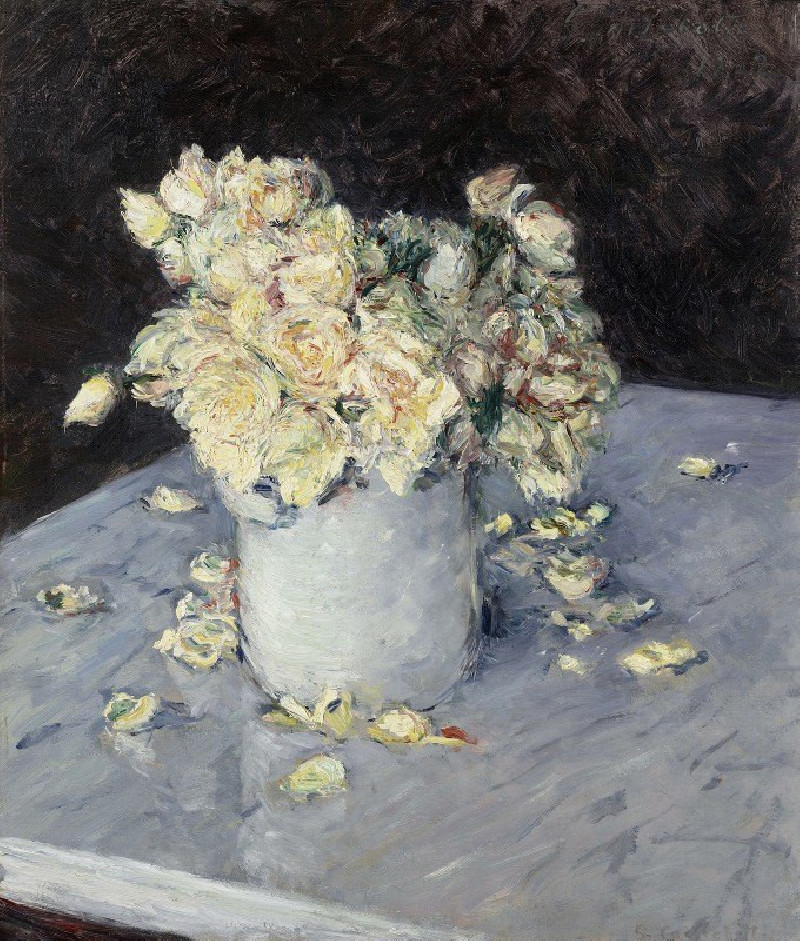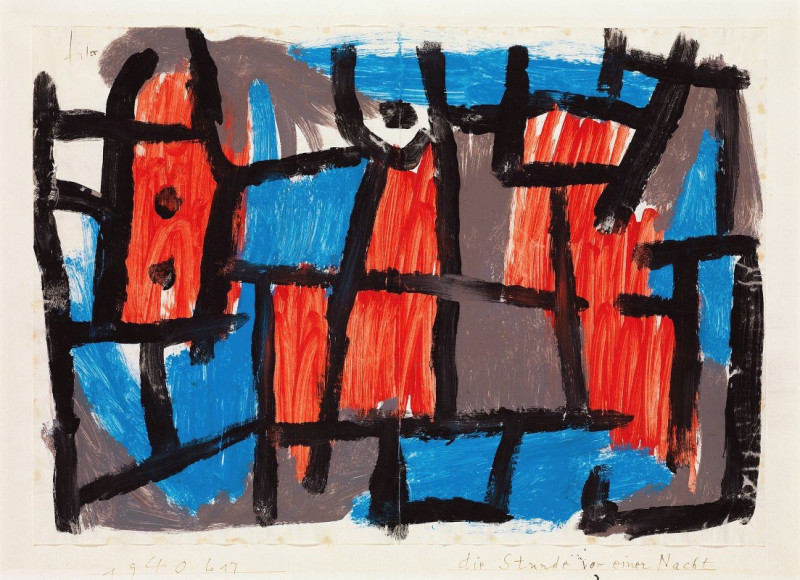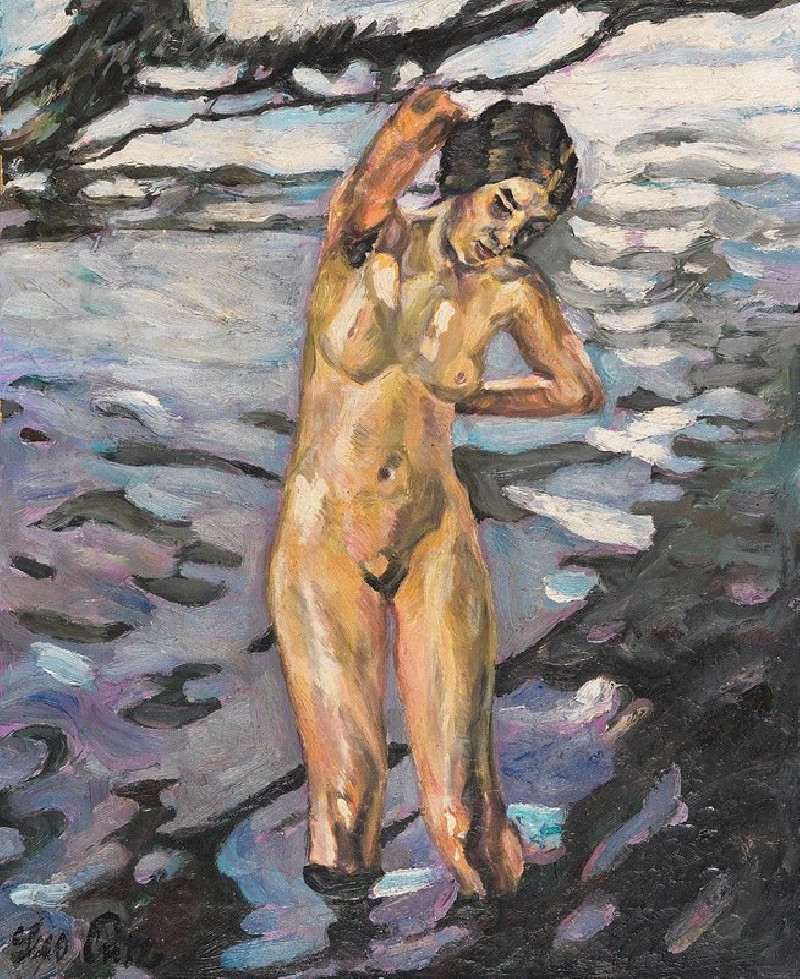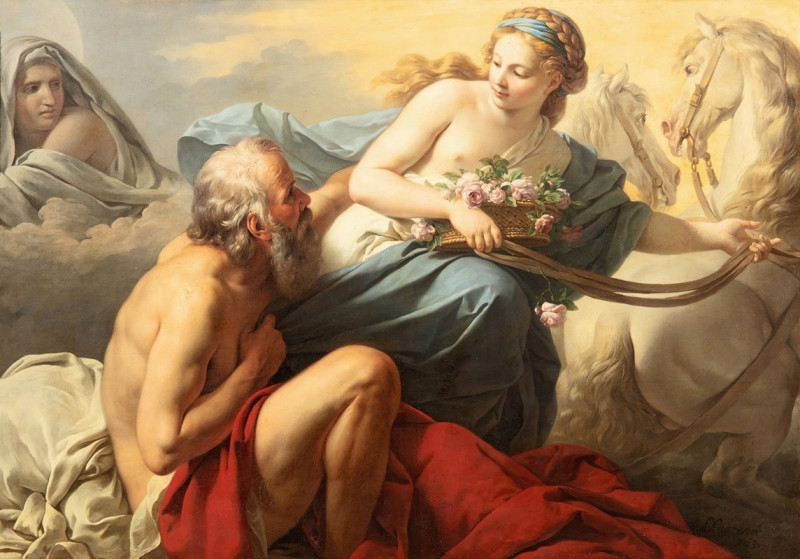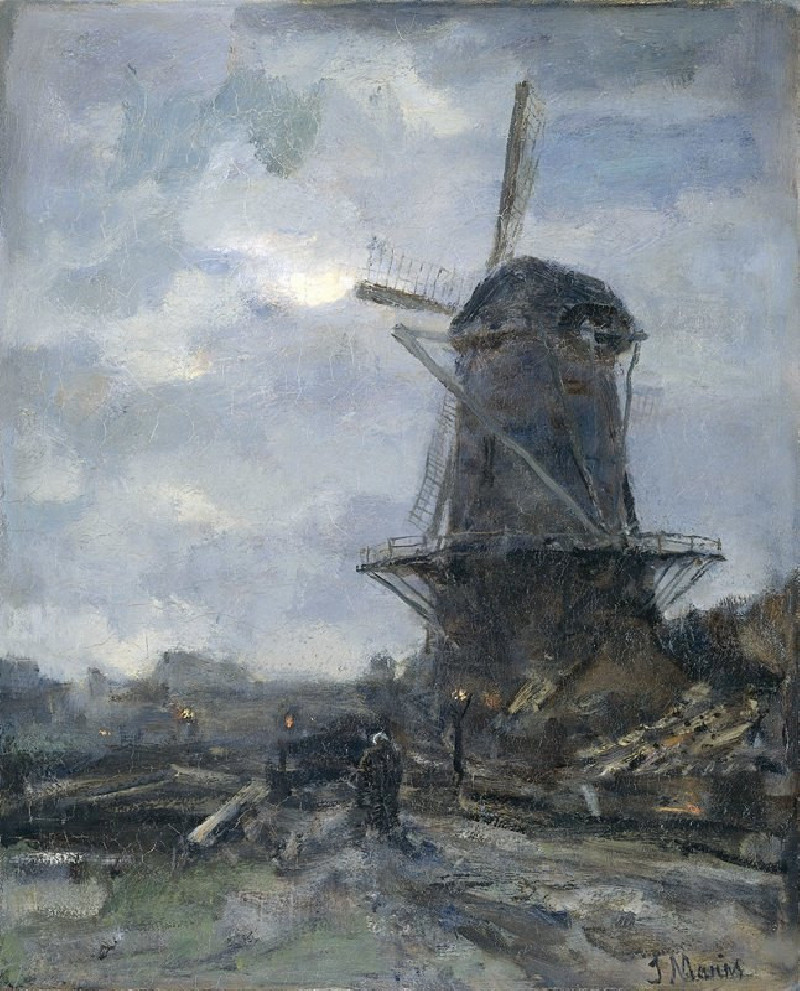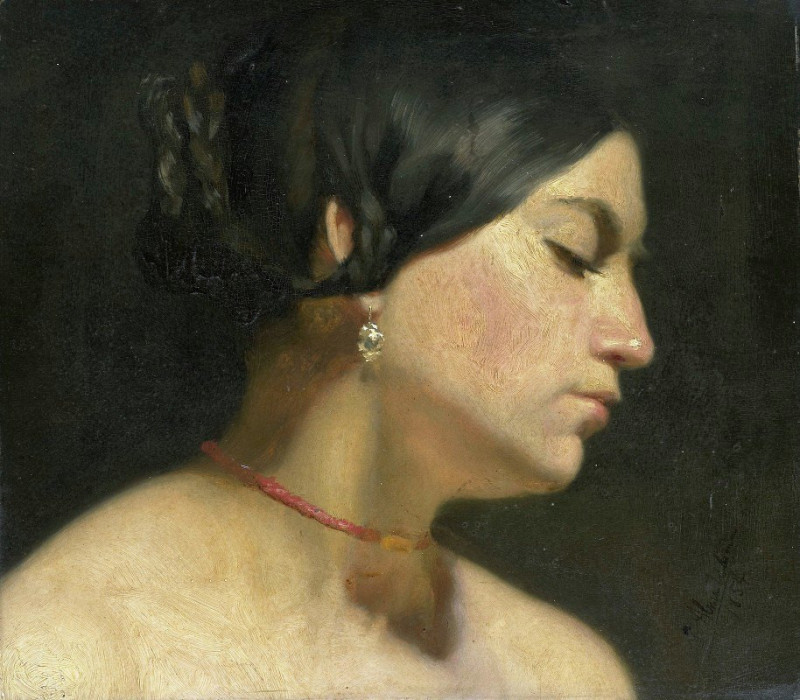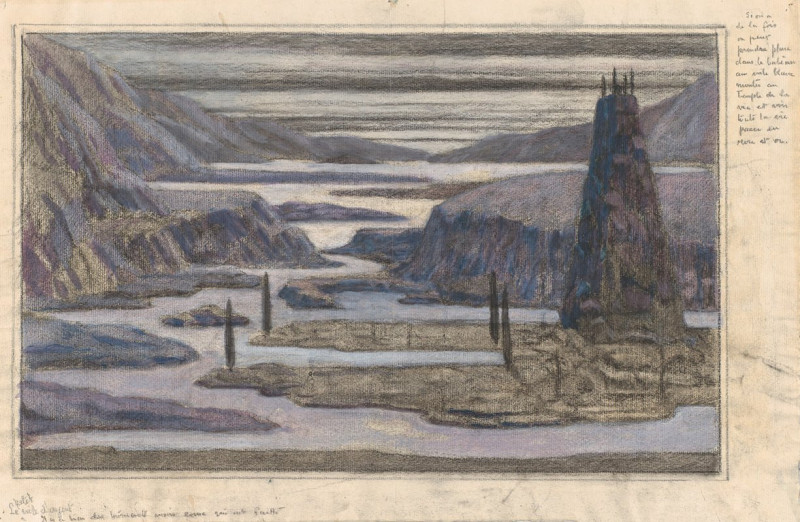Landscape (1888)
Technique: Giclée quality print
Recommended by our customers
More about this artwork
Dive into the serene and evocative world captured by George Inness in his 1888 masterpiece, "Landscape." This painting stands as a quintessential example of Inness's mature style, where he transcends the mere depiction of nature to evoke a deeper, spiritual resonance.In the foreground, a lone figure can be seen wandering through a lush, dense meadow, under the shade of dramatically rendered trees. These trees, with their robust trunks and delicately textured foliage, frame the scene and draw the viewer's gaze across the painting. The use of light and shadow, particularly in the intricate play of leaves and branches, reveals Inness's skillful brushwork and his focus on light as a transformative element in painting.The background opens up to a tranquil expanse, where a gentle lake subtly reflects the sky's paling light. The horizon melds a soft tapestry of blues and greens, suggesting the quietude of an early evening. Inness’s application of color gradations enhances the atmospheric effect, creating a sense of depth and vastness that beckons the viewer to step into the landscape.This enchanting scene is not just a visual delight but a portal to introspection. Inness, who was influenced by spiritual and philosophical ideas, used his landscapes to explore the profound connections between nature, the divine, and the human spirit. "Landscape" (1888) invites admirers to not only appreciate the beauty of the scene depicted but also to feel the emotion and contemplation stirred by such serene vistas.
Delivery
Returns
George Inness (May 1, 1825 – August 3, 1894) was a prominent American landscape painter.
Now recognized as one of the most influential American artists of the nineteenth century, Inness was influenced by the Hudson River School at the start of his career. He also studied the Old Masters, and artists of the Barbizon school during later trips to Europe. There he was introduced to the theology of Emanuel Swedenborg, which was significant for him; he expressed that spiritualism in the works of his maturity (1879–1894).

